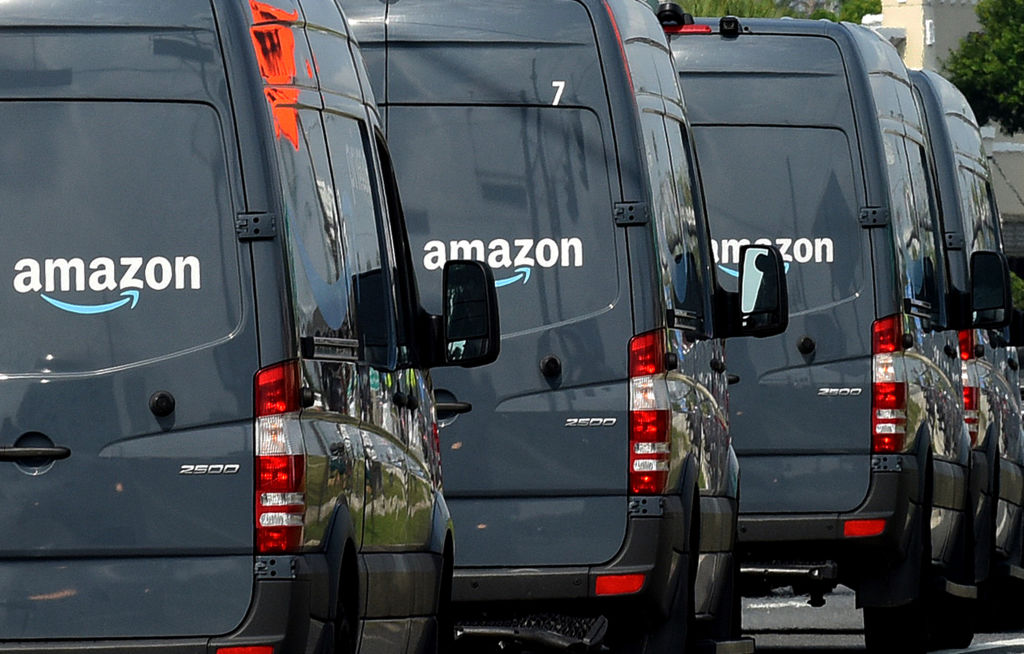
Amazon’s biggest sale of the year, Amazon Prime Day, starts Tuesday, July 12. What started as a one-day sale has morphed into a two-day event, running through July 13, giving bargain hunters more time to search for deals.
Amazon Prime Day can be a little overwhelming, with lots of items on sale and many popular ones selling out quickly due to limited inventory and high demand. It can be hard to know whether you’re actually getting a good deal on that 50-inch flat-screen TV you didn’t know you needed. Here are some tips to help you make the most of the sale event without spending unnecessarily.
Make a list—and check it twice
“I would definitely make a list,” says Stefanie Lew, a mother of two in Oakland, Calif., and longtime Amazon Prime member.
Lew, an e-commerce clothing buyer, keeps a year-round wishlist in her Amazon account and adds to it as items she needs come up, such as water bottles for her school-age children. On Prime Day, she opens her list and it automatically tells her what is on sale.
Having a list can also help with avoiding impulse buying, says Trae Bodge, a smart shopping expert. “Shoppers should make a list of what they want and need and try to stick to it.” Boge says it is important to be honest with yourself about what you can actually afford and whether you have “wiggle room” in your budget. “If not, you might need to sit this one out.”
Impulse buying is becoming more common. A recent Slickdeals survey, conducted by OnePoll, found that around three out of four people (73% of those surveyed) said that most of their purchases tend to be spontaneous versus only 59% last year. Those who want to avoid buying unnecessary items might want to avoid shopping at bedtime. Shoppers who scrolled for bargains while in bed accounted for 37% of overall impromptu shopping, the survey found.
Read More: Amazon Sellers Are Dreading Prime Day
Do your due diligence
Even with all the hype around Amazon’s mega sale, from themed goodie bags being given out at Whole Foods to constant commercials online and on TV, don’t assume Prime Day’s sale always offers the lowest price, says Bodge. “Before checking out, Google the name of the item to get a sense of how it’s priced elsewhere,” she says. “Remember that other retailers will be offering competitive sales, so the best deal could be on Amazon or it could be at another retailer.”
Let others do the work for you
If there is a specific item you have in mind, make sure you are getting the best prices by setting a “Deal Alert” on a site like Slickdeals, says Bodge. “That way, you’ll be alerted to where it’s on sale and for how much.”
If you do see that the price has dropped on an item you want to purchase, don’t wait too long to submit your order, says Kimberly Palmer, personal finance expert at NerdWallet. “Some of the most popular items are likely to sell out,” she says. The categories with the biggest price drops tend to be Amazon-branded items, such as the Kindle and the Echo, as well as other electronics, appliances, and household items.
Don’t fixate on the discount
Becoming an educated shopper is one of the best ways to beat Amazon at its own game. Budgeting expert Caroline Vencil recommends using CamelCamelCamel. “It’s an Amazon price tracker so that you can actually see the trends on the products that are on sale to see if they will be a better buy on Prime Day,” says Vencil. “Or [whether] to wait until Black Friday or Cyber Monday to buy.”
CamelCamelCamel will also show you price increases prior to Prime Day, which can help you decide if the item you are considering is really as good a deal as you think. “Seeing how prices were lower more than a month before Prime Day and were then increased as Prime Day approaches shows the urgency created around these days and the sale prices,” says Vencil. “Using this as a tool to really help you decide if a deal is actually a good deal and not some kind of faux percentage discount will help [you] decide if now is the best time to buy and [how] to be an informed consumer.”
Set a budget and stick to it
You need to go into Prime Day “knowing exactly what you can spend,” says Kia McCallister-Young, director of America Saves, a campaign managed by the nonprofit Consumer Federation of America. “Do this before you even start to peek at what deals are available.” You’ll want to consider all of your income, any upcoming expenses, and, most importantly, what you’re saving for. “Don’t lose sight of the big savings goals and expenses coming up,” she says.
Jessi Fearon, author of “Getting Good with Money,” recommends keeping one thing in mind when it comes to Prime Day or any big sales. “If it doesn’t fit into your spending budget, it’s too expensive no matter how deep the discount may be.”
By going into Prime Day with a spending cap, you can keep impulse and unneeded purchases at bay, says Bodge. “You will shop much more mindfully if you only have so much to spend.” And, if none of these approaches work, using a debit card rather than a credit card can make it easier, says Boge.
“If you don’t have it, you can’t spend it.”
More Must-Reads from TIME
- Donald Trump Is TIME's 2024 Person of the Year
- Why We Chose Trump as Person of the Year
- Is Intermittent Fasting Good or Bad for You?
- The 100 Must-Read Books of 2024
- The 20 Best Christmas TV Episodes
- Column: If Optimism Feels Ridiculous Now, Try Hope
- The Future of Climate Action Is Trade Policy
- Merle Bombardieri Is Helping People Make the Baby Decision
Contact us at letters@time.com